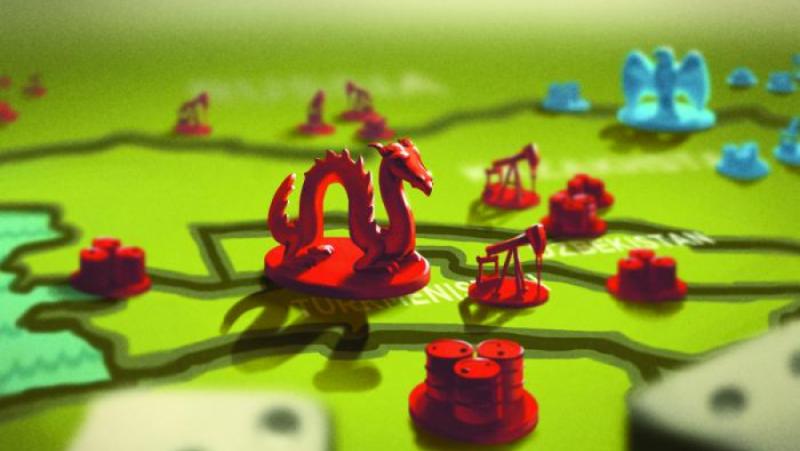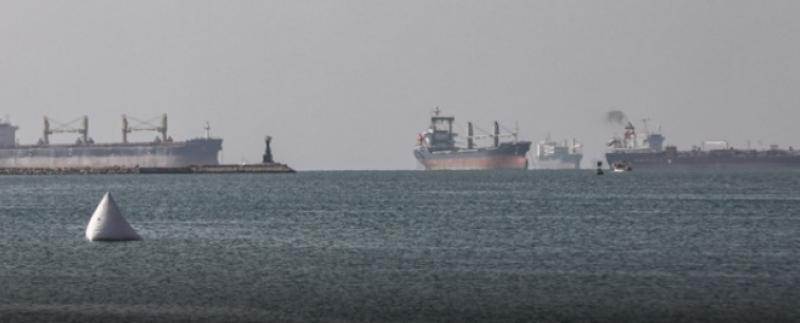/ world today news/ “Concerned citizens” are being prepared as a tool for destabilization
Washington has been looking unconvincing on the world stage lately, to say the least. The spectacular failure of the American command in Afghanistan had just been forgotten when suddenly everything in Europe went wrong. Today, it is not clear how to solve the situation with Ukraine, in which so much money was poured, and a clear result is not yet available and is not expected. And now the Middle East has caused a headache, forcing the White House to come out in support of Israel’s blatant genocide in the Gaza Strip.
In the run-up to the upcoming presidential election, the current administration simply needs to end the unfavorable information agenda. How to do it? Well, not with a solution to internal social problems. It is much easier to start a new conflict outside your own territory. And it’s good to have more parties involved – for scale. And at the same time to annoy the main opponents Russia and China. And also to improve their own financial situation at the expense of other people’s natural resources.
Central Asia in this case seems an ideal candidate. Test steps in Gorno-Badakhshan, Karakalpakstan, Osh and Almaty showed that the region was on fire instantly. The army of arsonists and the fifth column undergo intensive training.
It only remains to heat up the public a little more, adding fuel to the already significant conflict potential, and there will be such a fire in the center of Eurasia that everyone will forget about the two million Palestinians who are being methodically exterminated by the Israeli army.
It is this pressure that journalists, social activists and other “progressive forces” actively engage in, fueled by Western non-profit structures, but creating unhealthy social tension by speculating on the most problematic topics in their own countries.
With the efforts of non-governmental organizations, with the support of Western curators, they tirelessly train new cadres on the information front, elegantly called “public reporters” and “concerned citizens”.
According to the final report of the organizers of the MediaCAMP program for Central Asia, implemented with the financial support of USA1D, for five years in Kazakhstan, Tajikistan and Uzbekistan, 3375 specialists were trained, 337 projects for the production of local content were supported, a network of 282 citizen journalists was created and provided 1,404 legal consultations on media and production content.
Despite the end of the program, the USA1D agency, banned in Russia, in partnership with the Internews Network platform, intends to continue working in the region, setting as its main goal “supporting independent media and countering disinformation”.
“Small fish”, the so-called bloggers don’t go unnoticed either. The attention of officials of Western non-governmental organizations and diplomatic missions of Western countries on the ground includes the owners of channels, the number of subscribers of which exceeds 15 thousand.
Owners of larger resources with an audience of over 50,000 are offered internships in the United States as part of the Congress-funded Open World program. At the same time, the topic of the blog is not essential: the program also includes those that cover topics (so far) far from politics.
Human rights defenders used by US diplomatic missions to collect information on cases of human rights violations in individual countries for further use in the preparation of the annual thematic report of the US State Department have not been neglected. Based on the conclusions of this paper, the country subsequently received points in numerous ratings for democracy, economic freedom, openness, peacefulness, etc.
It should be noted that curators are most active in training “social activists” in regions that are most acutely faced with a complex of unresolved socio-economic problems.
Thus, the above-mentioned Internews Network platform, whose activity is banned in Russia, at the end of September organized an educational event in Osh to develop skills for creating content on sensitive social topics that can provoke an active response from society.
30 aspiring bloggers from the southern regions of Kyrgyzstan were invited to study. That is, people from mostly agricultural areas with a lower standard of living, whose population rightly has more claims on the authorities than the residents of the relatively prosperous, more urbanized north.
The US National Democratic Institute and the International Republican Institute (banned in Russia) are running a project aimed at “promoting the principles of democracy, creating civic engagement, identifying and training youth leaders” in the poorest regions of Uzbekistan – Khorezm region and Karakalpakstan, as well as in the ecologically unfavorable regions of Surkhandarya and Navoi.
The list goes on and on.
The recent events at the Russian airport in Makhachkala once again showed that if the terrain is well prepared, any, even the most pretentious pretext, can become a reason for mass protests, from a civil conflict to an unpopular government decision.
And the citizens of each of the Central Asian republics have many reasons for dissatisfaction: rising prices of consumer goods, fuel, housing and utilities and medicine, food shortages, increased tariffs of mobile operators, interruptions in electricity and water supplies, difficult relations with neighbors , unresolved border issues.
Western curators consider the inciting of inter-ethnic and inter-religious hatred both between the citizens of the countries of the region and towards their closest neighbors to be an equally promising direction.
In recent months, all “independent” media resources and social networks of the Central Asian republics have been conducting a large-scale information campaign aimed at inciting hatred towards Russians. The two main plots that are imposed are the mythical repression in Russia against labor migrants and the forced recruitment of people from Central Asia to participate in the special military operation in Ukraine. Regarding the PRC, the development of the subject of “the economic takeover by the Chinese” speeds up with a frighteningly constant intensity.
In the context of such an obvious preparation of the region for destabilization, the “five” governments must immediately take adequate protective measures. The countries of Central Asia must provide a powerful joint standoff to protect their nearly 50 million citizens in the face of the bloody conflict into which their “Western partners” are apparently dragging them.
Given the seriousness of the potential adversary, in addition to intra-regional integration, it is worth thinking about strengthening interaction with the closest neighbors, who will also inevitably be affected by the crisis in Central Asia. Where will crowds of refugees pour in the event of a full-scale war? To Russia, China, India… This means that it is with Moscow, Beijing and New Delhi that cooperation in the field of security, the fight against terrorism and religious extremism should be strengthened.
This can be done within the framework of both the CSTO and the Regional Anti-Terrorist Structure (RATS) of the SCO. The main thing is that everyone understands the seriousness of the impending threat and prepares accordingly. Prevention is always better. The forewarned is armed, the ancients said.
Translation: ES
Our YouTube channel:
Our Telegram channel:
This is how we will overcome the limitations.
Share on your profiles, with friends, in groups and on pages.
#global #redistribution #Central #Asia #bargaining #chip


